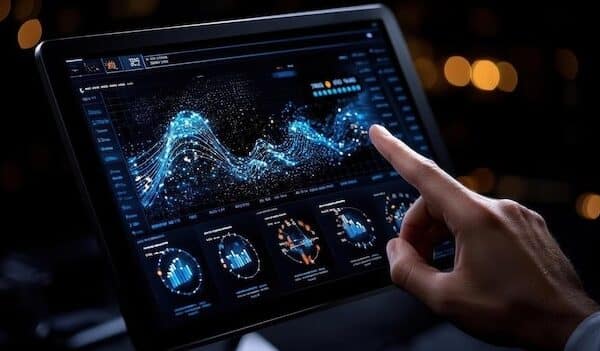Forecasting and Predictive Analytics: with Rapid Phone Center

Forecasting and Predictive Analytics: with Rapid Phone Center
Unlock the power of forecasting and predictive analytics to enhance decision-making, optimize operations, and drive business growth effectively.
At Rapid Phone Center, we understand the importance of leveraging data to drive business decisions. In an increasingly competitive landscape, using predictive analytics and forecasting tools can significantly enhance our operational efficiency and strategic planning. This guide will explore how predictive analytics for business forecasting can optimize our processes, improve sales forecasting, and ensure better demand management.

Predictive Analytics Sales Forecasting: Leveraging AI for Strategic Growth
Predictive analytics refers to the use of statistical techniques, data mining, and machine learning algorithms to identify patterns and predict future outcomes based on historical data. By analyzing past trends, businesses can forecast future events with greater accuracy.
Forecasting involves predicting future values or trends based on historical data. It is a crucial aspect of business strategy, allowing organizations to plan for upcoming demand, manage inventory levels, and allocate resources effectively. Discover how Artificial Intelligence enhances Predictive Analytics to transform data into actionable insights for better decision-making.
While both predictive analysis and forecasting aim to anticipate future trends, they differ in methodology and application. Predictive analytics utilizes complex algorithms and models to analyze large datasets, while forecasting typically relies on simpler statistical methods, such as time series analysis. However, the two concepts are interrelated; predictive analytics for demand forecasting enhances traditional forecasting methods by incorporating advanced data analysis techniques.
At Rapid Phone Center, we harness the power of predictive analytics and forecasting to elevate our business strategy and customer experience. By employing advanced data analysis techniques, we accurately forecast market trends and customer preferences. This enables us to optimize our inventory and deliver personalized services. Our commitment to leveraging these tools ensures that we stay ahead of the curve, providing our customers with the latest mobile devices and accessories they desire. Unlock insights with expert Research Data Analysis. Transform raw data into actionable strategies for informed decision-making and growth.

Predictive Analytics Demand Forecasting: Best Practices for Retail and Supply Chain
At Rapid Phone Center, we utilize predictive analytics for sales forecasting to gain insights into customer behavior and market trends. This approach allows us to identify potential sales opportunities and optimize our sales strategies accordingly. By employing sales forecasting predictive analytics, we can:
- Improve Accuracy: Predictive analytics provides a more accurate picture of future sales, reducing reliance on gut feelings or outdated data.
- Identify Trends: By analyzing historical sales data, we can uncover patterns that inform future sales strategies.
- Enhance Resource Allocation: With better visibility into anticipated sales, we can allocate resources more effectively to meet demand.
At Rapid Phone Center, we leverage cutting-edge forecasting and predictive analytics to enhance customer experience and streamline operations. Our data-driven approach allows us to anticipate market trends, optimize inventory management, and deliver personalized services. By harnessing advanced analytics, we ensure that our customers receive the latest products and services tailored to their needs, setting us apart as a leader in the mobile industry. Unlock your sales potential with Predictive Analytics for Sales, helping you forecast trends and make data-driven decisions effectively.
Predictive Analytics for Demand Forecasting
At Rapid Phone Center, we distinguish between predictive analytics vs forecasting to enhance our strategic operations. Forecasting relies on historical data to project future sales and trends, while predictive analytics uses advanced algorithms and machine learning to identify patterns and potential outcomes. By integrating both methodologies, we optimize inventory management and tailor our services, ensuring our customers receive the best mobile devices and accessories suited.

Predictive analytics for demand forecasting is essential for maintaining optimal inventory levels at Rapid Phone Center. By using historical data to forecast demand, we can:
- Reduce Stockouts and Overstocks: Accurate demand forecasting ensures that we have the right products available at the right time, minimizing lost sales and excess inventory costs.
- Improve Customer Satisfaction: By meeting customer demand consistently, we enhance their overall experience and loyalty.
At Rapid Phone Center, we specialize in predictive forecasting analytics to drive our business decisions and improve customer satisfaction. By utilizing advanced data analysis techniques, we accurately predict market trends and consumer behavior, enabling us to optimize our inventory and service offerings. This proactive approach ensures that our customers have access to the latest mobile devices and accessories, reinforcing our commitment to excellence in the industry.
Is Predictive Analysis Used for Forecasting?
Absolutely! Predictive analysis is integral to effective forecasting. By employing predictive analytics to forecast demand, we can analyze various factors, including market trends, seasonality, and customer behavior. This comprehensive approach leads to more reliable forecasts and better decision-making. Enhance your campaigns with Predictive Marketing Analytics, empowering businesses to anticipate customer behavior and optimize strategies.
At Rapid Phone Center, we utilize forecast and predictive analytics to enhance our operations and customer service. By analyzing market trends and consumer behavior, we can accurately anticipate demand and optimize our inventory. This data-driven approach allows us to offer the latest mobile devices and accessories tailored to our customers’ needs. Our commitment to leveraging advanced analytics sets us apart, ensuring a seamless shopping experience for all.

At Rapid Phone Center, we understand the nuances of predictive analysis vs forecasting in our strategic approach. While forecasting provides estimates based on historical data, predictive analysis delves deeper, utilizing advanced algorithms to anticipate future trends and behaviors. By integrating both methods, we optimize inventory management and enhance customer service, ensuring that our clients always have access to the latest mobile technology and accessories tailored.
At Rapid Phone Center, we leverage predictive analytics forecast to create accurate forecasts that drive our business decisions. By analyzing historical data and market trends, we anticipate customer demand and optimize our inventory effectively. This data-driven approach allows us to stay ahead of the competition and provide personalized service tailored to our customers’ needs. Our commitment to using advanced analytics ensures that we always offer the latest mobile technology and accessories. Boost your revenue with Outbound Sales, targeting potential customers through strategic outreach to drive engagement and conversions.
Better Planning and Forecasting with Predictive Analytics
At Rapid Phone Center, we explore the differences between forecasting vs predictive analytics to enhance our operational strategies. Forecasting utilizes historical data to project future sales, while predictive analytics goes further by employing advanced algorithms to analyze trends and customer behaviors. By integrating both approaches, we optimize inventory and improve customer satisfaction, ensuring that our clients have access to the latest mobile devices and accessories tailored to their needs.
Implementing better planning and forecasting with predictive analytics is a game-changer for Rapid Phone Center. Here’s how we enhance our forecasting processes:

- Data-Driven Decisions: By harnessing data from multiple sources, we create robust models that predict future sales and customer demand.
- Scenario Planning: Predictive analytics allows us to simulate various market scenarios and assess their potential impacts, enabling us to make informed decisions.
- Continuous Improvement: With ongoing analysis, we refine our models to adapt to changing market conditions, ensuring our forecasts remain relevant and accurate.
At Rapid Phone Center, we recognize that integrating business forecasting and predictive analysis is essential for thriving in today’s fast-paced market. By leveraging forecasting predictive analytics, we can enhance our decision-making processes, improve customer satisfaction, and ultimately drive growth. As we continue to refine our predictive analytics capabilities, we remain committed to providing our customers with the best products and services in the industry. Supercharge your growth with effective Lead Generation strategies, attracting and nurturing potential customers for lasting business.
What is Forecasting Predictive Analysis
Predictive analytics market forecast is vital for understanding competitive dynamics and identifying opportunities for growth. By analyzing market trends and consumer behavior, we can:
- Anticipate Market Changes: Staying ahead of shifts in consumer preferences or economic conditions allows us to adapt our strategies proactively.
- Identify New Opportunities: Through market forecasting, we can pinpoint emerging trends and capitalize on them before our competitors do.
By embracing predictive analytics and forecasting, we are not only preparing for the future but also shaping it. With a focus on continuous improvement and adaptation, Rapid Phone Center is positioned to lead the way in innovative retail strategies that meet the evolving needs of our customers.

Frequently Asked Questions
Discover how Rapid Phone Center leverages forecasting and analytics to address Frequently Asked Questions and enhance customer service.
What is forecasting in predictive analytics?
Forecasting is the process of predicting future trends, events, or values based on historical data. Predictive analytics uses various statistical and machine learning techniques to analyze past data and make predictions about future outcomes.
What types of data are used in forecasting models?
Forecasting models typically use time series data (data points collected over time) or cross-sectional data (data collected at a single point in time). The data may include sales figures, stock prices, customer behavior, and more, depending on the industry and application. Elevate your brand with Omnichannel Customer Service, ensuring seamless support across all channels for a unified customer experience.
How does forecasting differ from predictive analytics?
Forecasting focuses specifically on predicting future values based on historical patterns, usually in a time-based context. Predictive analytics, on the other hand, is broader and includes not only forecasting but also predicting outcomes based on complex relationships between multiple variables, often using machine learning techniques.

How can forecasting models handle seasonality and trends?
Models like SARIMA (Seasonal ARIMA), Holt-Winters Exponential Smoothing, and machine learning algorithms can account for seasonal fluctuations and trends by incorporating parameters specifically designed to handle recurring patterns and long-term shifts.
You might also find our article intriguing:
Good Luck to You





